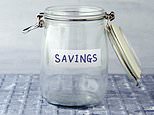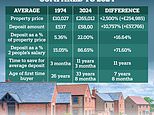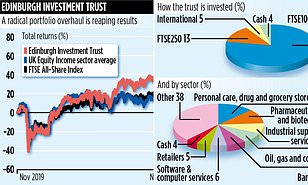Gilt yields fall as investors ramp up bets on interest rate cuts next year
Borrowing costs fell as investors ramped up bets on interest rate cuts next year despite efforts by the Bank of England to quash such talk.
The yield on ten-year gilts – a benchmark measure of how much the Government pays to borrow – dropped below 4 per cent for the first time since May.
The slide came as financial markets indicated a just over 50 per cent chance that the first rate cut will come in May.
If this does not materialise, investors are all but certain it will come in June in a major boost for borrowers with mortgages and other loans.
However, Bank governor Andrew Bailey once again sought to dampen expectations of such a move, insisting that rates would need to remain at 5.25 per cent ‘for an extended period’ to tame inflation.

Rate expectations: The yield on ten-year gilts – a benchmark measure of how much the Government pays to borrow – dropped below 4% for the first time since May
He said: ‘Rates are likely to need to remain at these levels for an extended period to bring inflation back to target on a sustained basis.’
But with the US Federal Reserve and the European Central Bank also expected to cut rates next year, investors increasingly believe the Bank of England will follow suit.
In another sign of the impact higher rates are having on the economy, latest figures show Britain’s construction industry has suffered a third month of decline as a sharp slump in housebuilding takes its toll.
S&P Global said its index of activity across the industry dipped from 45.6 in October to 45.5 in November.
It was the second weakest reading since the depths of Covid lockdowns in May 2020 and the third month in a row below the 50 cut-off between growth and decline.
Housebuilding was the worst-performing sector according to the figures, as recent rises in interest rates pushed up the cost of mortgages – hitting demand for new homes. Civil engineering and commercial property fared slightly better.
On a brighter note, lower prices for steel and timber and generally weaker demand pushed down raw material costs at the fastest rate since July 2009.
The slump in construction contrasts with a more positive, though still sluggish, picture in the wider economy, with the private sector growing again after three months of decline led by a rebound in the services sector.
































































